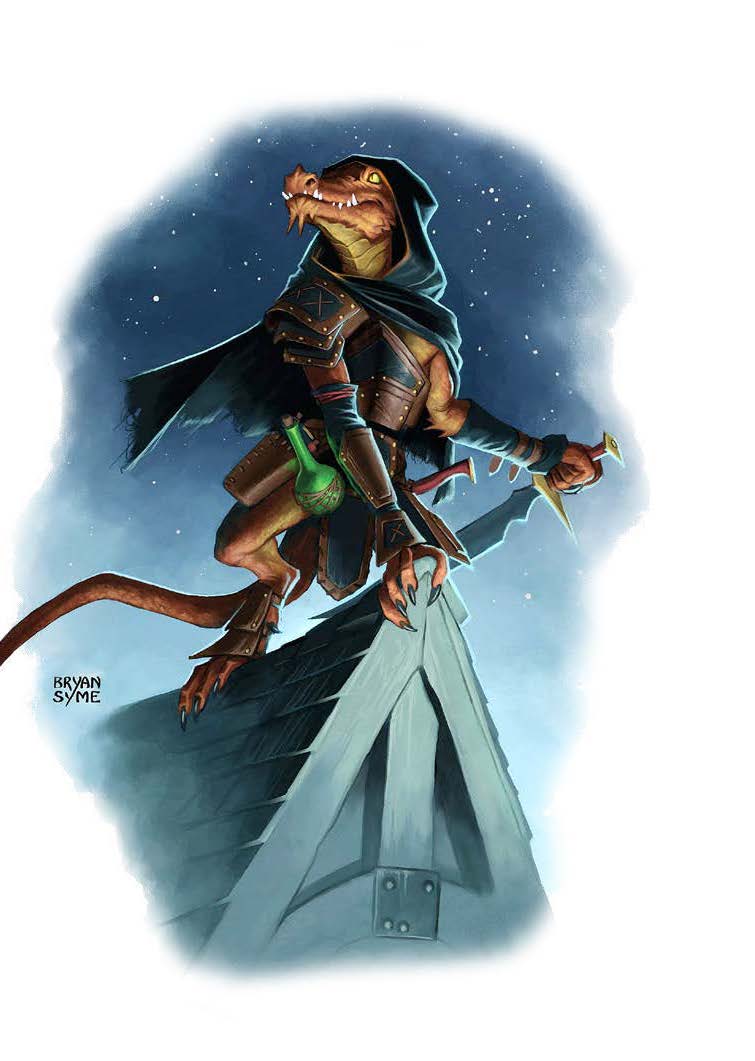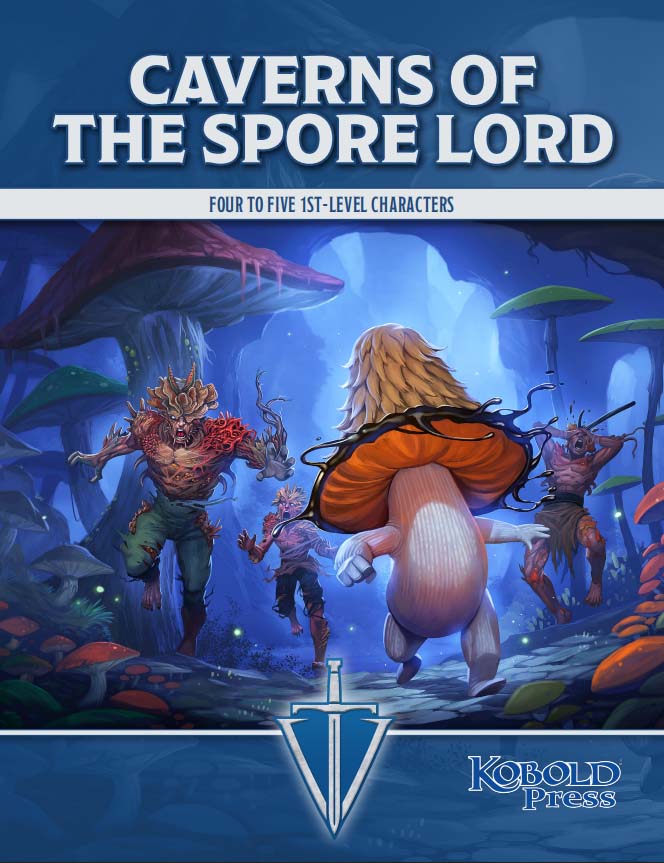 In our last installment, we talked about spicing up your encounters with some actionable dungeon flair, bits and pieces within your environments that players can use to even the odds and make things interesting. Today we’re going to be talking about a few other aspects of imbalanced encounter building, and those are what I like to refer to as banes and gambits. These are quite the opposite of what we discussed last time in that they will further complicate and challenge characters, adding layers of complexity and difficulty to your encounters. You can use them when you really want to put the pressure on or just make things interesting. First though, let’s define them.
In our last installment, we talked about spicing up your encounters with some actionable dungeon flair, bits and pieces within your environments that players can use to even the odds and make things interesting. Today we’re going to be talking about a few other aspects of imbalanced encounter building, and those are what I like to refer to as banes and gambits. These are quite the opposite of what we discussed last time in that they will further complicate and challenge characters, adding layers of complexity and difficulty to your encounters. You can use them when you really want to put the pressure on or just make things interesting. First though, let’s define them.
Banes/Curses. Purely detrimental elements within a scene that largely—or only—befall the player characters, such as an ancient ritual site where the spirits of the hateful dead linger and taunt them, a doorway that when the threshold is crossed a character’s limbs become transposed, a weakening curse bestowed by a magical ward once it’s disrupted, or a torrent of nightmares brought about by touching the crown of a tyrant king atop a treasure pile. The method of interacting with these is usually after characters traverse an area, touch an object, or fulfil some other constraint.
Gambits. These are a very specific form of environmental interactivity point. A gambit can be making an offering to an idol of a dead god and hoping that it sees the act as a symbol of devotion and not defiance: it may bestow a blessing or smite the character where they stand. A gambit can also be a single shred of decrepit rope that will only hold the weight of a single character to swing across a chasm in order to kick the antagonist off of a ledge, landing safely afterward and saving the day, or the rope breaking and them falling to their doom. Gambits can be a lot of things, but they are generally one-time-use things that only a single character may take advantage of or sometimes a fleeting moment where each member of the party has a single chance to partake or pass on the (often deadly) opportunity at hand, such as drawing a rune from the pouch of a mysterious fey that alters their fate. The important thing about gambits is that they are divisive and carry a lot of weight. Gambits should always be purely optional and never be a requirement for an encounter’s success.
Overall, I’d use the following guidelines for implementing them in your encounter building:
- No more than one gambit per scene. Don’t use these every scene or even in every play session.
- No more than three banes/curses per scene but usually only one or two. Again, don’t overuse these, or it will backfire, and they will become mundane.
Get Salty
Like any good chef, knowing just how much of a spice or ingredient to use when cooking is similar to knowing just how many of these elements to use when planning as a GM. These things come with experience, but the only way you’re going to “earn your salt” is if you start experimenting. So when to use them? First and foremost, these are not outright things that are going to play in characters’ favors, so stacking the odds against them is a delicate dance. Banes and gambits are great examples of ways to simultaneously spice up encounters while also adding some danger without simply piling more monsters on. Things don’t always have to be so lugubrious for your players though; sometimes you’ll want to place them so that characters and their enemies have an equal opportunity to experience their effects.
Of course, when you begin using banes and gambits, the rewards for overcoming them should be equally as satisfying as they are challenging. Depending on the style of game you run, character death may be very real, very unlikely, or somewhere in between—but one thing is true throughout all of those flavors, and that’s there’s no truly satisfying reward without feeling like something is being risked. Whether that risk is character death, embarassment, innocents being harmed, or letting the bad guy get away is of course up to how your game runs. The good thing though is, regardless of play style, the thrill of overcoming the odds that aren’t just larger numbers of enemies is almost always more satisfying than simply having a high kill count. Although there is nothing wrong with laying waste to dozens of minions. Let us please take a moment of silence and/or pour out some liquor for 4th edition’s minion monster mechanics before we move on. The important thing here is that just like you as a GM are risking breaking out of the encounter building box and the reward being satisfying to players, their characters will too have to look past their spell lists and class skills in order to triumph. Speaking of characters, let’s get back to helping them out, shall we?
Evening the Odds
Beyond what we discussed in the previous installment, there are two other major ways to help characters out when they are unmatched, and those are consumables and companions. I know what you’re thinking: “I’m not just going to give my players more potions for them to horde in their bags and never actually use.” Well the answer is no, you shouldn’t; like all magical items I believe potions should be special and infrequent. Unless you’re an alchemist, or Geralt of Rivia, there’s no excuse to have a bartender’s kit full of concoctions anywhere in your campaign. The potion conundrum is perhaps an entire other blog series for another time though. The consumables I’m talking about are a bit different. Time for some more definitions!
Consumables. Any one-time-use effect that can be used immediately or shortly after finding. These are things not to be held onto for long, if at all. Examples are an aged magical furnace that can temporarily enchant a weapon once before finally sputtering out, a desicated scroll that crumbles into uselessness shortly after being found, a shelf to be toppled onto enemies, a hanging platform full of heavy objects to fall on enemies after having its rope(s) cut, and so on.
Companions. Any animal, spirit, monster, or otherwise friendly-enough creature or person who lends aid to the party either on a temporary or single-use basis. This can be a starved animal that gets fed and then fights at the characters’ sides, a summoned spirit that wants to avenge their death, or a guardian that warns players of an enemy’s weakness, solution to a puzzle, or key to some other critical encounter element. Think of Dark Souls NPCs, minus the creepy laughs—or not.
Tossing in consumables or companions just before an encounter is a great way of helping to even the odds, even better is when you toss them in dynamically as the battle is taking place. Again, these are simply ideas and key words to really mine for deeper use. I know this all sounds pretty fuzzy, and that’s because it is. It’s intended to be because over-instruction is the bane of creativity. I’m not here to write rules on how to break the rules; that would just be silly. The idea that more rules equals better is just as absurd as an RPG supplement’s page count somehow being a measure of how good it is. Speaking of myths, in our next installment, we’ll be talking about one of my favorite tabletop RPG myths of all time—group composition. Spoiler alert: they don’t matter. You want a party of five rogues? Do it. Three dumb fighters and two horny bards? Have a ball! See you next time.

